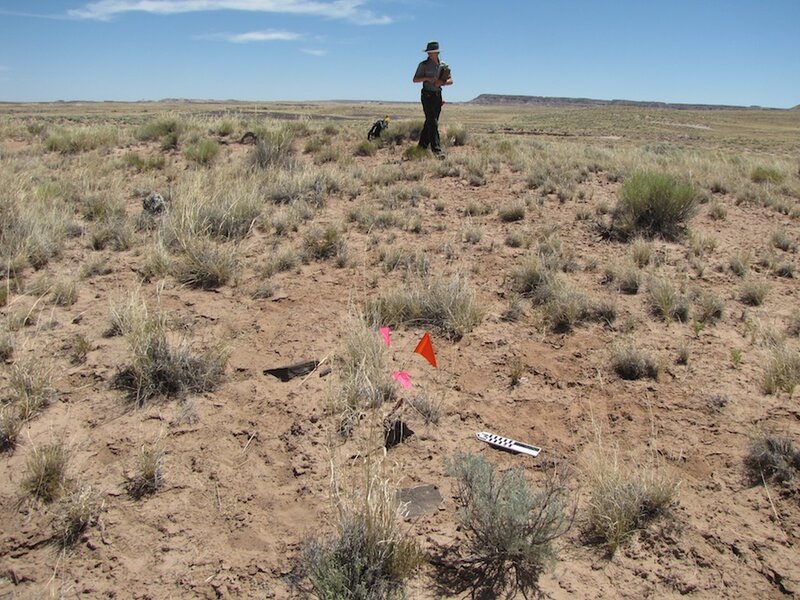Scientists in Petrified Forest discover ancient village. Who lived there?
Loading...
Archaeologists at the Petrified Forest National Park in Arizona have discovered two ancient villages that are about 1,300 years old.
The neighboring sites are both large "basketmaker" villages inhabited by ancient Pueblo peoples between 200 and 700 A.D., Bill Reitze, the park’s archaeologist told The Monitor.
“Finding smaller sites is pretty common but to find these larger sites with 50 to 75 structures is more unique,” Mr. Reitze says. “That’s what makes it interesting and there are some really interesting things to learn.”
They were found as part of a boundary expansion survey project, which just finished its second summer season. The first village was found last summer, the second this July.
The sites, which are less than a kilometer apart, have numerous weathered sand stone artifacts and features poking out of sand dunes. These include primarily stone tools – spear points and scrapers made of petrified wood – but also shell ornaments and early ceramics, which is how the site is dated, Reitze says.
Archaeologists also discovered different architectural features showing evidence of homes and food storage bins.
“We found sandstone slabs used to make pit houses – those are kind of a unique architecture type from the southern Colorado Plateau,” Reitze says.
A pit house is a semi-subterranean home two to three meters across, consisting of a sandstone-lined pit in the ground that would be covered with brush.
Reitze says these discoveries are valuable because archaeologists can compare patterns of larger basketmaker sites to smaller ones.
“By looking at regional data we can look at the transition from nomadic people to people who started to stay put. At this time period they were obviously starting to settle into villages and build houses,” he says.
Reitze also says that by looking at how people started to use ceramics – which are some of the oldest in the area – archaeologists can get an interesting look at how people at the time were using new technology.
“We are able to study how people were starting to rely on agriculture more,” he says.
Reitze says the discoveries are an important part of boundary expansion for the park, which is in the process of doubling in size “to protect cultural land and natural resources.”
While the two recent ancient villages are not open for visitation now, they will be soon. Starting this summer, new parts of the park will be opened up to the public.







